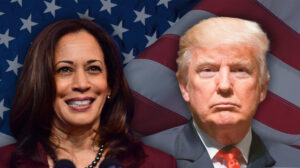The American bank Citi points out that the U.S. elections are approaching rapidly, with Trump and Harris tied in national polls, but with Trump gaining momentum and now favored in prediction markets.
Trades favoring Trump in the markets—such as long positions on the U.S. dollar, short positions on interest rates, and long positions on U.S. stocks over stocks from the rest of the world—have thus gained traction. With market consensus seeming to coalesce around a ‘red sweep,’ this could limit the short-term rise of Trump-favored trades, while leaving room for a shift in the event of a Harris victory,” the bank explains.
Trump has gained momentum and is now favored to win in prediction markets (with roughly a 60% probability). But even with the elections appearing to lean in Trump’s favor, significant uncertainty remains. Harris and Trump are tied in national polls, with the two candidates separated by less than one percentage point in most races.
“Trades favoring Trump in the markets have been activated, as they have rallied. The dollar has appreciated by 4% in recent weeks (Citi FX strategists had estimated a +5% increase in the event of a ‘red sweep’). The yields on 10-year U.S. Treasury bonds have risen to about 4.2% (Citi’s interest rate strategists foresee a 4.3% yield in the event of a ‘red sweep’). U.S. stocks have outperformed non-U.S. counterparts by 6% since the end of September,” Citi analysts note.
Citi and its strategists highlight that the best-case scenario for the S&P 500 index is a ‘red sweep’ with up to a 4% increase, while the worst-case scenario is, conversely, a ‘blue sweep’ with a decline of 3% to 6%. If the outcome is split, it would be neutral for the S&P 500 index. A ‘red sweep’ would mean significant underperformance for the rest of the world, a rise in the dollar and bond yields, whereas a ‘blue sweep’ would produce the opposite effect.
Where are the market opportunities?
“In the short term, recent price action suggests a less favorable setup for popular Trump trades leading up to November 5, with room for rotation if Harris prevails. Several key macroeconomic catalysts also remain on the pre-election calendar (e.g., potential policy announcements from China, the U.S. employment report). Over a medium-term horizon, a global equity strategy for a Trump victory would hinge on a stronger dollar, rising interest rates, trade policy uncertainty, and value rotation. Relatively speaking, this favors the U.S. over the rest of the world, value stocks like those in energy and financials, selected defensive sectors, and moves against certain internationally exposed economies abroad.”
The Harris strategy is based on a weaker dollar, lower nominal bond yields, possible tax increases, and a general tilt toward climate-friendly policies. This would likely favor stocks outside the U.S. over U.S. stocks, non-U.S. industrials over energy/healthcare, and emerging markets that are particularly sensitive to a weaker dollar,” Citi analysts conclude.
In response to whether Trump trades have ‘peaked,’ Citi responds, not necessarily. “Despite strong cross-asset movements, our Trump long/short strategies remain below their average levels for September, suggesting potentially more room for growth in a Trump victory scenario. Potential Trump trades that have lagged include the U.K. and non-U.S. energy. Harris-linked trades that have underperformed include Europe excluding the U.K.,” the firm concludes.





